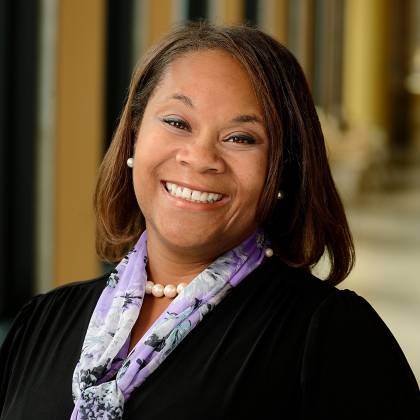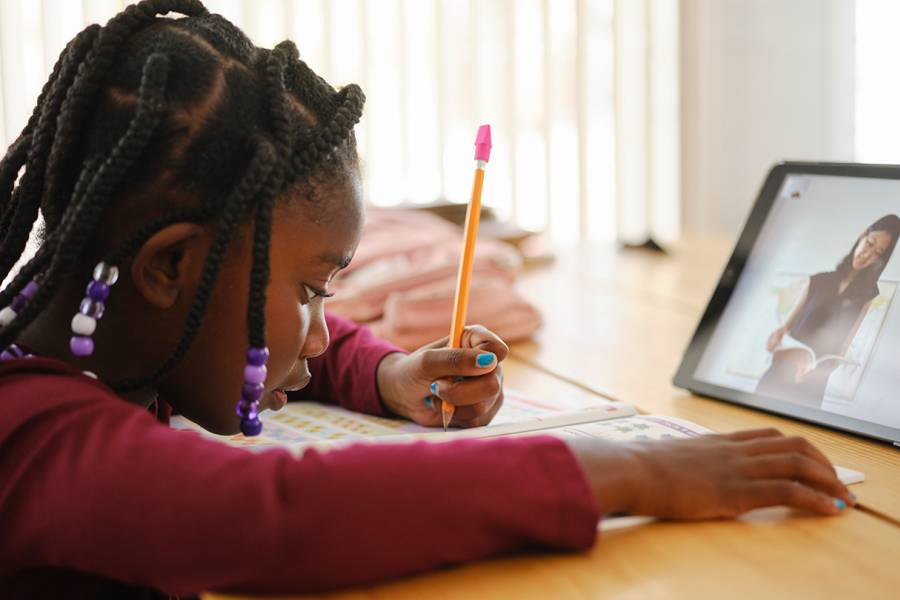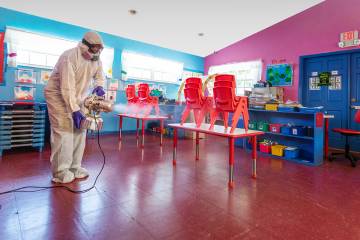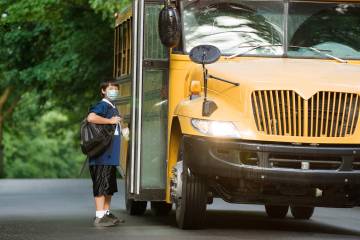As K-12 school leaders finalize decisions for what fall 2020 will look like, the coronavirus pandemic—still surging unabated across the United States—complicates every possible solution. Beneath all is an impossibly high-stakes debate, pitting the risks to public health against the importance of sustaining the academic and social growth of students.
While some U.S. schools plan to move forward with in-person classes or hybrid models, many in recent weeks have opted for all-virtual instruction this fall. Parents, meanwhile, are coming up with their own solutions, exploring options like home schooling, virtual tutoring, and "pandemic pods," where small groups of students might gather more safely.

Image caption: Annette Anderson, deputy director of the Johns Hopkins Center for Safe and Healthy Schools
Image credit: Courtesy of JHU School of Education
For insight on this delicate moment, the Hub reached out to Annette Anderson, assistant professor at the Johns Hopkins School of Education and deputy director of the Johns Hopkins Center for Safe and Healthy Schools. Anderson, also a former teacher and principal, shared her thoughts on how schools and families can adapt creatively to the current challenges.
Give us a sense of the situation school leaders are facing right now.
I don't know if people can appreciate how much work it takes to reopen schools in the fall, under normal circumstances. Over the summer, administrators are hiring staff, creating master schedules and class rosters, purchasing supplies, working with parent associations, and so forth. The process starts in May.
So it is extremely overwhelming when you think about layering on top of that the uncertainty about what the learning experience will look like in fall. This summer, many schools have explored socially distant models, like an "A" day and "B" day splitting the student population, as well as other hybrid learning models. In order to do that safely and effectively, you have to walk through every possible scenario—for example, how many students can fit in the gym at the same time, or the cafeteria? It's enormously challenging and some schools have concluded it's not even possible. So some plans are changing now as late as August.
We've seen a lot of schools trending toward all-virtual learning, after previously exploring other models. What do you think of that?
I think this is the right decision for many schools because they're trying to act in the best interest of the health of their students, teachers, and staff. It also gives them more time to plan what a robust virtual learning environment looks like. When schools closed in March, they had to do it suddenly and without any precedent. There was a huge learning curve. Going into fall, I don't think there's a school district administrator in the country who would say, "We're going to do things exactly the same way we did in spring." People want to improve because they want to make sure our students have a rigorous learning experience.
In places with confirmed decisions to go all-virtual, it's allowed more time to get resources in place to make this happen effectively. Teachers can think seriously about how they'll plan instruction, and school leaders can think about how they'll reach subgroups that need more attention, such as special needs or gifted-and-talented children.
At the same time, some parents are planning things such as pandemic pods or home schooling or micro-schooling. A lot of parents are saying, "What my child experienced last spring was not sufficient." I think these types of things could be great as supplements to virtual school experiences, but I also think school districts are trying to innovate and adapt as well. Not all families have the resources right now to pursue alternative scenarios beyond their local school.
With all-virtual learning, how can schools try to retain some sense of community for the students and families?
A school is a physical space—a building where learning happens—but it is also a collective experience. As we rethink what reopening looks like in a virtual landscape, we need to explore how these buildings may still offer experiences to students—not to the same degree of saturation but in other ways. Maybe we're having extracurriculars like sports or theater take place in a socially distanced way. Maybe we're serving our special needs population in small groups in person; maybe we're opening school-based health clinics to serve students' families.
We have to adapt creatively because one of the great disappointments going into fall is that many students miss their friends. For children from low-income families especially, we need to think about the important role that extracurriculars serve, and keep students engaged. There can be many avenues for everyone to stay connected to their school community. Having some of these experiences available will be critical for building the socioemotional strength of our students.
In Baltimore, we've heard of the Henderson-Hopkins school doing a good job at this, and beyond that serving as community centerpiece, with a food bank and health resources.
I'm excited and proud of how Henderson-Hopkins has become an exemplar of a community school in the pandemic. [Ed. note: Anderson was a co-founder of the K-8 school, operated by the Johns Hopkins School of Education and Morgan State University.] It's wonderful to see it held up as a model for how schools can include activities and resources not just for students but for their families and neighborhoods. Schools are community beacons. The more they can accommodate these types of services, the larger role they can play in their communities. For example, many parents continue to rely on schools serving meals, and that cannot stop. As the pandemic races on, we're seeing schools step up to the plate over and over again.
How can schools make up for the fact that children will be at home while parents need to work, either at home or elsewhere?
That's one reason why this idea of pandemic pods is gaining popularity. Many parents are trying to figure out how to get back to work, and that's a challenge. I've heard from administrators that even when families have access to the internet and high-quality devices, they still struggle with having children engaged in virtual learning because parents have to work and can't supervise.
Maybe we think about offering scholarships to some of these pandemic pods, or scholarships for virtual tutoring experiences, so that students can engage at a smaller scale with academic support mechanisms. Maybe neighbors with kids of the same age are getting together to arrange outings or field trips or other types of shared learning experiences.
In a way, we've always had these informal pods where families and friends support each other in caring for a child. That's been going on for generations, and it's no different during the pandemic. We've seen loved ones fill in for parents who are essential workers, for example. So this doesn't always have to be formal experience with spreadsheets and assignments and payments. Whether a family is well-resourced or not, we're seeing everyone get innovative with how to support their children through virtual learning and also how to expand that.
What education models strike you as most promising right now?
We haven't seen them fully formed yet. I'm hopeful for effective organization and collaboration between school districts and parents, and that's where we'll see new models emerge that help reshape our education landscape in the future. At the end of all of this, I'm hopeful that we'll have new solutions that serve our children better.
Posted in Voices+Opinion, Politics+Society
Tagged education, center for safe and healthy schools, covid-19










